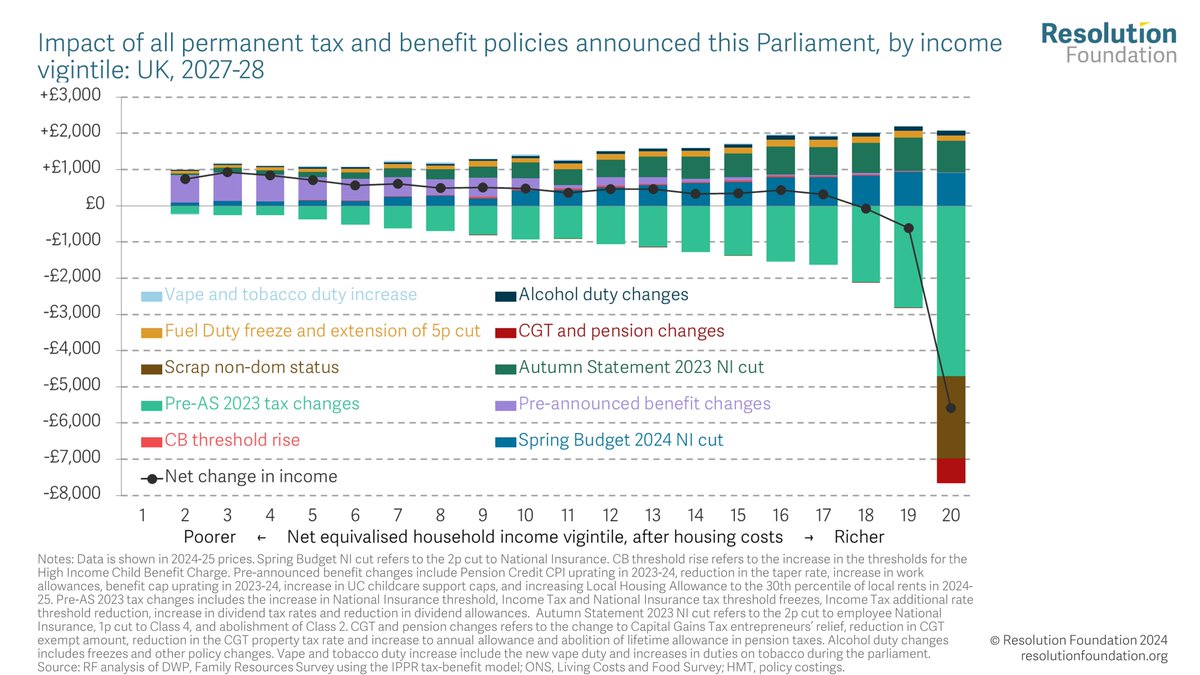Some fiscal charts on today's #SpringStatement 🧵- The Chancellor benefitted from a significant improvement in the underlying fiscal outlook, with the OBR expecting cumulative borrowing over the forecast to be over £42bn lower (in today's prices) than expected back in October. 

In line with the fall in borrowing, government debt is also forecast to be lower throughout the forecast, with it now expected to fall below 80 per cent of GDP by 2026-27. 

The Chancellor has decided to 'spend' only a minority of the improvement in the fiscal outlook on tax cuts. In 2026-27, the OBR project underlying borrowing to be £15bn lower than previously forecast, while new policies add just £3bn to borrowing. 

Despite cuts to income tax rates and rise in NICs threshold taxes are still projected to rise as a share of the economy. Government receipts are projected to hit 40% by 2026-27, the highest since 1982 – equating to additional revenue of over £3,000 per household compared to 2019 

The Chancellor has left himself significant headroom against his fiscal rules – debt is projected to fall by 1% of GDP in 2024-25. This should allow the government to loosen fiscal policy if the economy deteriorates further. 

• • •
Missing some Tweet in this thread? You can try to
force a refresh














